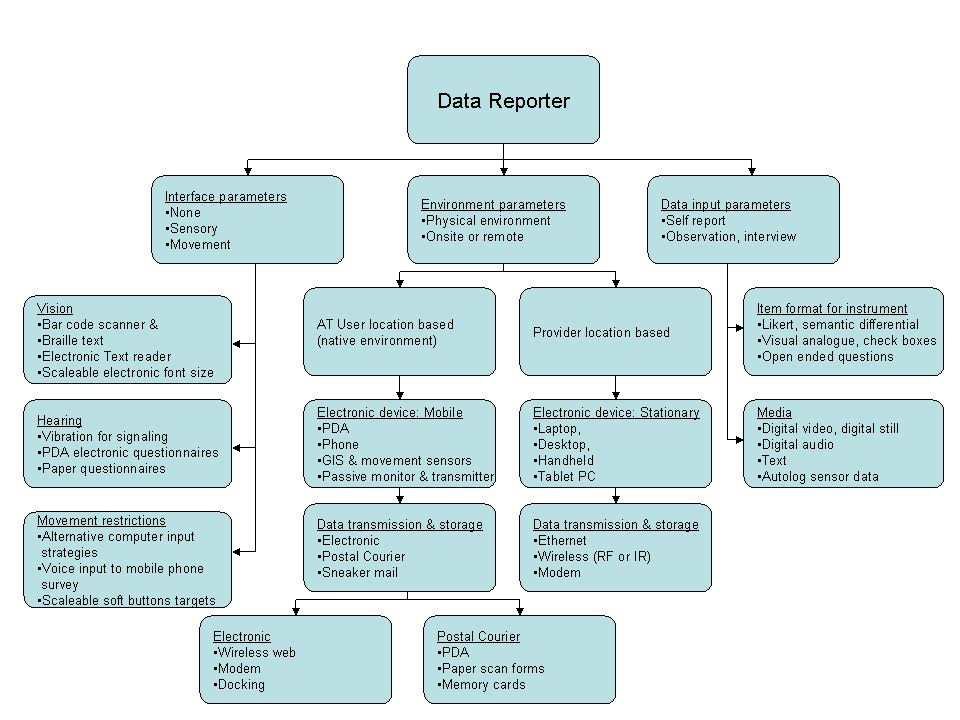Back to Next Generation Data Collection Index
Data Collection System Decision Tree

Long Description
The flowchart in this appendix describes the data collection system decision tree. There are three main parameters that need to be considered in creating a data collection system. The flowchart shows three branches which are the parameters.
The first one that needs to be considered is the central one which is the environment parameters. It is necessary to know who is going to report the data and what their environment is like both the physical environment and the onsite or remote environment. Will the data reported be the AT user (patient or client) or the provider. Once it is decided who the data collector is, there is a list of information processing devices to choose from that are suited to that person and that environment. The environment parameters are divided into two branches: the AT user location (native environment) and the provider’s location. If the environment in which the data is collected is the AT User’s then the electronic device needed has to mobile such as a PDA, phone, GIS and movement sensors, and passive monitors and transmitters. On the other hand if the location in which the data is collected is the provider’s, then the electronic data collecting system may be stationary such as a laptop, desktop, handheld and tablet PC. In case of the AT user the data transmission and storage may be electronic, postal courier, or sneaker mail and in case of the provider it may be Ethernet, wireless (RF or IR) or modem. Electronic data transmission and storage may be through wireless web, modem or docking while postal courier data transmission and storage may be PDA, paper scan forms, or memory cards.
The second branch that needs to be considered is the interface parameters. There are alternative methods of interface when the parameters in vision, hearing, and movement are different from the typical. In case of visual restrictions, the alternative means for the interface that can be used are bar code scanners and Braille text, electronic text reader, and scaleable electronic font size. In the case of hearing restrictions, the alternative means include vibration for signaling, PDA electronic questionnaires, and paper questionnaires. Lastly, in the case of movement restrictions the alternative interface parameters include alternative computer input strategies, voice input to mobile phone survey, and scaleable soft button targets.
The third and final branch is for data input parameters which are of two main types: self-report and observation and interview. For both types, the item format for the instrument and the media need to be considered. The item format for the instrument includes the type of scaling that will be used such as likert, semantic differential, visual analogue, check boxes or open ended questions. The media considerations include digital video, digital still, digital audio, text, and autolog sensor data.




